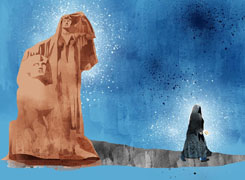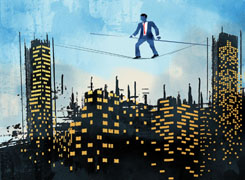5-7 Year Investment: Which Small Cap MF Should I Consider for a Monthly Rs 4000 SIP?
Ramalingam Kalirajan |10902 Answers |Ask -Follow
Mutual Funds, Financial Planning Expert - Answered on Sep 24, 2024
He has an MBA in finance from the University of Madras and is a certified financial planner.
He is the director and chief financial planner at Holistic Investment, a Chennai-based firm that offers financial planning and wealth management advice.... more

Hello, Kindly request you to recommend a Small Cap MF for monthly SIP of Rs 4000.My invest horizon is 5-7 years. I already hold Nippon India Small Cap Fund with SIP of Rs 4000 monthly.
If you already have a small cap fund, it is important to avoid duplication. Holding multiple small cap funds can increase your risk unnecessarily. Diversification is key to managing risk and getting better returns. However, having only small cap funds can make your portfolio more volatile.
Let’s explore a better solution.
Your Existing Small Cap SIP
Since you already have a SIP of Rs 4000 in a small cap fund, it is important to assess whether increasing exposure to this category is suitable. Small cap funds can be more volatile. Overexposure to them can make your portfolio less stable.
It is always advisable to keep your investments aligned with your risk tolerance.
Here are a few things to consider before adding another small cap fund:
Volatility: Small cap funds can be more volatile, especially in the short term.
Risk Tolerance: Are you comfortable with high-risk investments? You must assess your comfort with possible short-term losses.
Diversification: Rather than adding another small cap fund, you may want to diversify into different categories. This can help you manage your risk better.
Existing Portfolio Review: Ensure your overall portfolio is balanced. It should not be tilted too heavily towards a single category like small cap.
Understanding Your Investment Horizon
Your investment horizon is 5-7 years. While small cap funds generally perform well over the long term, 5-7 years is considered medium-term. For such a period, small cap funds may not always be the best option. The market may face downturns in the short to medium term, which could affect your returns.
Small Cap Risks: Since small cap funds are highly volatile, your investment may face significant ups and downs in this timeframe.
Investment Horizon Alignment: For a 5-7 year horizon, consider a more balanced approach. Large cap or hybrid funds may suit your needs better.
Medium-Term Considerations: Small cap funds often take longer to show significant returns. They may underperform in a shorter investment window.
Actively Managed Funds vs. Index Funds
It’s important to understand the difference between actively managed funds and index funds. Actively managed funds have professionals making investment decisions. They aim to outperform the market. Index funds, on the other hand, simply track the market.
Active Management Advantage: Actively managed funds can adapt to market conditions. Fund managers can make strategic decisions to protect or grow your investment.
Disadvantages of Index Funds: Index funds blindly follow the market. They do not protect against market downturns. In volatile markets like small caps, this can be risky.
Potential for Higher Returns: Actively managed funds have the potential to outperform the index in the long run. This is especially true for sectors like small caps.
Why Not Direct Funds?
Direct funds are often promoted for their lower costs. However, investing through a certified financial planner (CFP) can offer more benefits. Let’s see why regular funds through an MFD with CFP credentials could be a better option:
Expert Guidance: Investing through a CFP gives you access to expert advice. They can guide you based on your risk profile and goals.
Fund Selection: Direct funds require you to choose the right funds on your own. This may be challenging without professional knowledge.
Risk Management: A CFP will help you manage risks. They can create a balanced portfolio that suits your needs.
Ongoing Monitoring: A CFP can keep track of your portfolio. They can recommend changes based on market conditions and your goals.
Balancing Risk and Return
Given your medium-term investment horizon, it might be better to balance your portfolio. Small cap funds should not be the only focus. Here are a few steps to ensure you have a balanced and diversified portfolio:
Consider Large Cap Funds: Large cap funds invest in established companies. They are more stable and provide steady returns.
Hybrid Funds: These funds offer a mix of equity and debt. They can provide stability while still offering growth.
Multi-Cap Funds: These funds invest across large, mid, and small cap companies. This diversification can help balance risk and returns.
Review Asset Allocation: Ensure you have a good mix of equity and debt. Equity offers growth, while debt provides stability.
Long-Term Approach: A balanced portfolio allows you to take advantage of market opportunities while protecting your capital.
Evaluating Your Risk Tolerance
It is essential to assess your risk tolerance before making further investments in small caps. Here are a few key points to help you evaluate your risk profile:
Aggressive or Conservative: Are you comfortable with the possibility of short-term losses for higher long-term gains?
Emotional Reaction to Volatility: How do you react when markets go down? Will you be able to stay invested during market downturns?
Financial Security: Can you afford to take on more risk? Or do you need more stable returns to meet your financial goals?
Exploring Alternative Investment Options
Since small caps are risky, it might be better to explore other investment options. Here are a few alternatives that can complement your existing investments:
Balanced Funds: These offer a mix of equity and debt. They are less volatile compared to small cap funds.
Equity Funds (Large or Mid Cap): Large cap and mid cap funds provide better stability. They are less risky than small caps but still offer growth.
Debt Funds: If you are risk-averse, consider debt funds. They provide stability and regular returns, though with lower growth potential.
SIP Strategy in Different Categories: You could allocate your SIP across different types of funds. This way, you reduce the risk of being too concentrated in one segment.
Key Recommendations for a Balanced Portfolio
Limit Small Cap Exposure: Do not overinvest in small cap funds. They should be a smaller portion of your portfolio.
Diversify into Other Categories: Add large cap, mid cap, or hybrid funds to balance risk.
Work with a CFP: A certified financial planner can help you choose the right funds. They will create a portfolio suited to your goals and risk tolerance.
Regular Monitoring: Review your portfolio regularly. Make adjustments as necessary based on market conditions.
Stay Invested for the Long Term: Short-term volatility is common in the market. Focus on your long-term goals and stay invested.
Final Insights
You already have exposure to small cap funds through your existing SIP. Adding another small cap fund may not be the best choice for your medium-term horizon of 5-7 years. Instead, a more balanced portfolio with exposure to large cap, mid cap, or hybrid funds might be better suited to your risk profile.
Working with a certified financial planner can provide valuable guidance. They can help you create a diversified investment strategy that aligns with your financial goals. It is important to diversify, manage risks, and review your investments regularly.
Best Regards,
K. Ramalingam, MBA, CFP,
Chief Financial Planner,
www.holisticinvestment.in
https://www.youtube.com/@HolisticInvestment
You may like to see similar questions and answers below
Ramalingam Kalirajan |10902 Answers |Ask -Follow
Mutual Funds, Financial Planning Expert - Answered on Apr 09, 2024
Sanjeev Govila | Answer |Ask -Follow
Financial Planner - Answered on Jul 23, 2023
Tejas Chokshi | Answer |Ask -Follow
Tax Expert - Answered on Jun 14, 2023
Ramalingam Kalirajan |10902 Answers |Ask -Follow
Mutual Funds, Financial Planning Expert - Answered on May 01, 2024
Anu Krishna |1754 Answers |Ask -Follow
Relationships Expert, Mind Coach - Answered on Dec 18, 2025
Anu Krishna |1754 Answers |Ask -Follow
Relationships Expert, Mind Coach - Answered on Dec 18, 2025
Anu Krishna |1754 Answers |Ask -Follow
Relationships Expert, Mind Coach - Answered on Dec 18, 2025
Chocko Valliappa |544 Answers |Ask -Follow
Tech Entrepreneur, Educationist - Answered on Dec 18, 2025
Chocko Valliappa |544 Answers |Ask -Follow
Tech Entrepreneur, Educationist - Answered on Dec 18, 2025
Chocko Valliappa |544 Answers |Ask -Follow
Tech Entrepreneur, Educationist - Answered on Dec 18, 2025
Anu Krishna |1754 Answers |Ask -Follow
Relationships Expert, Mind Coach - Answered on Dec 18, 2025
Chocko Valliappa |544 Answers |Ask -Follow
Tech Entrepreneur, Educationist - Answered on Dec 18, 2025
Chocko Valliappa |544 Answers |Ask -Follow
Tech Entrepreneur, Educationist - Answered on Dec 18, 2025
Naveenn Kummar |236 Answers |Ask -Follow
Financial Planner, MF, Insurance Expert - Answered on Dec 18, 2025



























